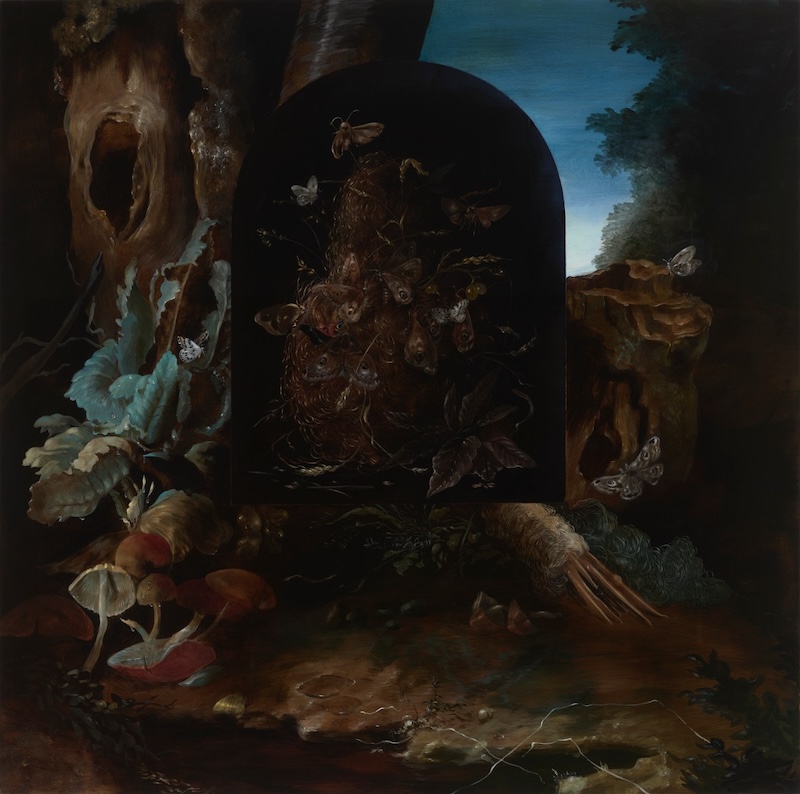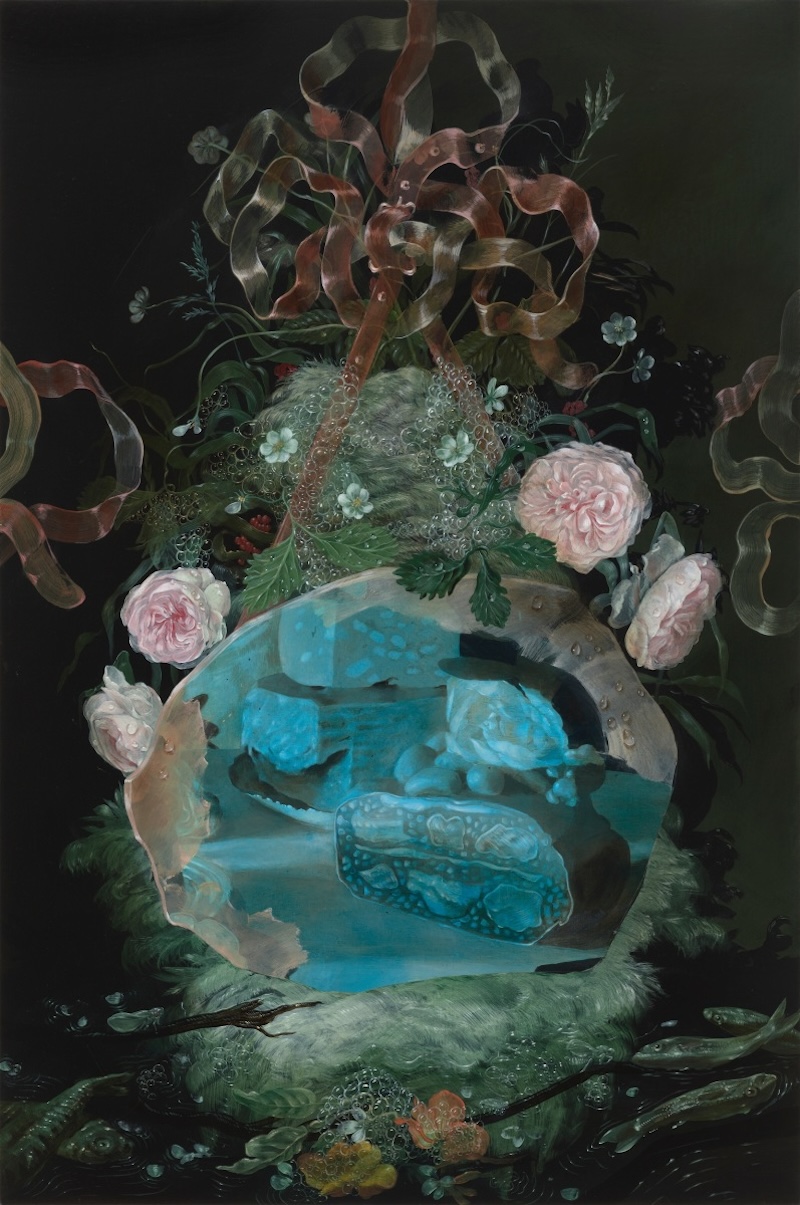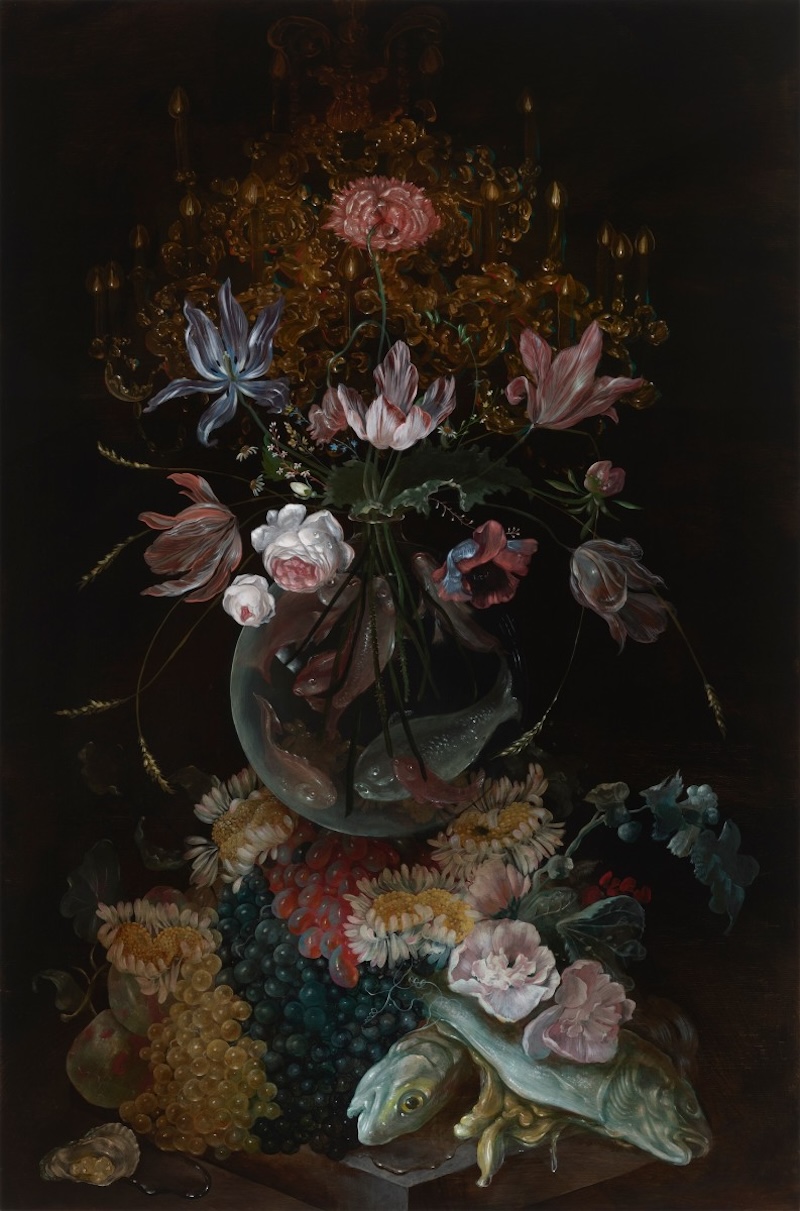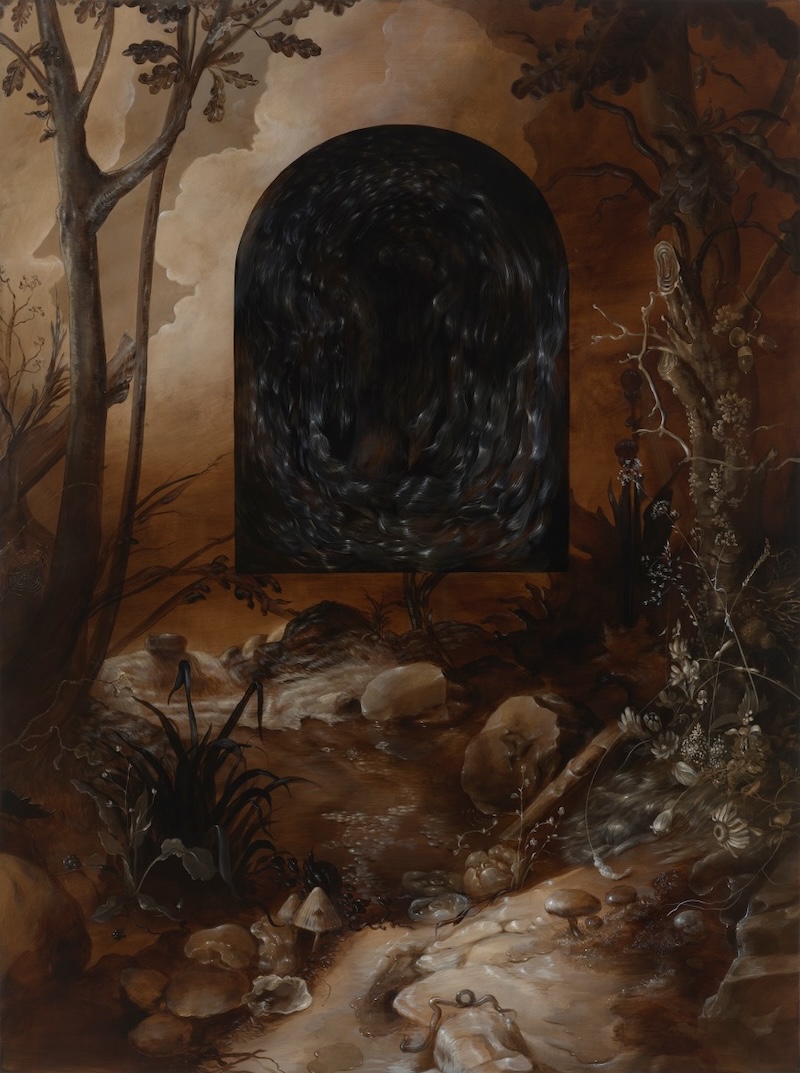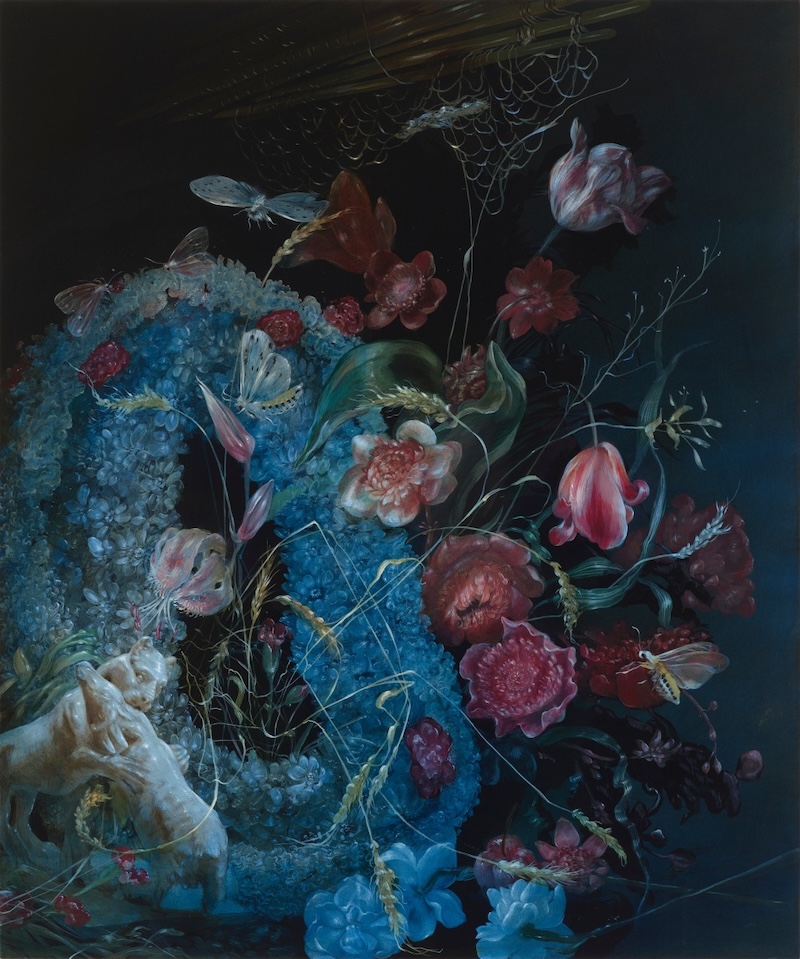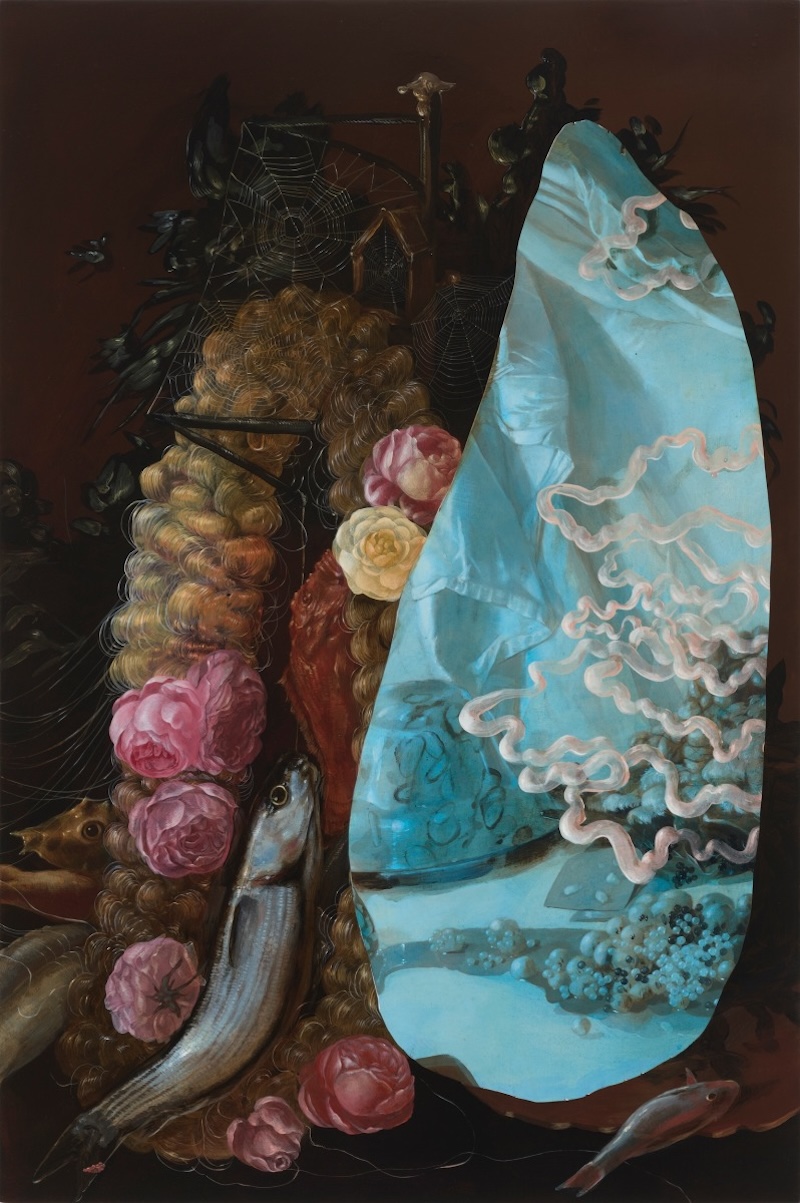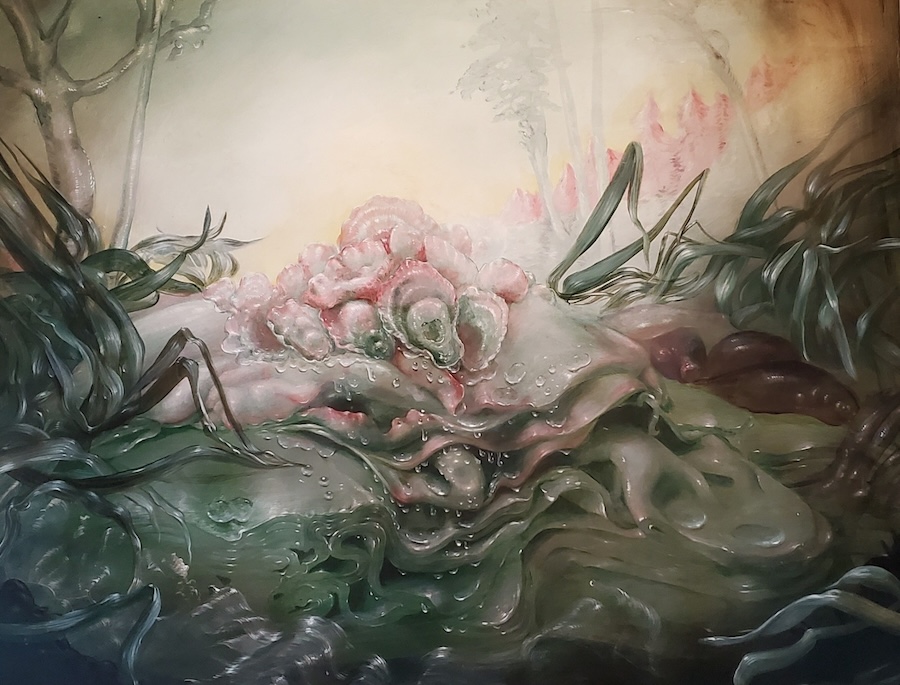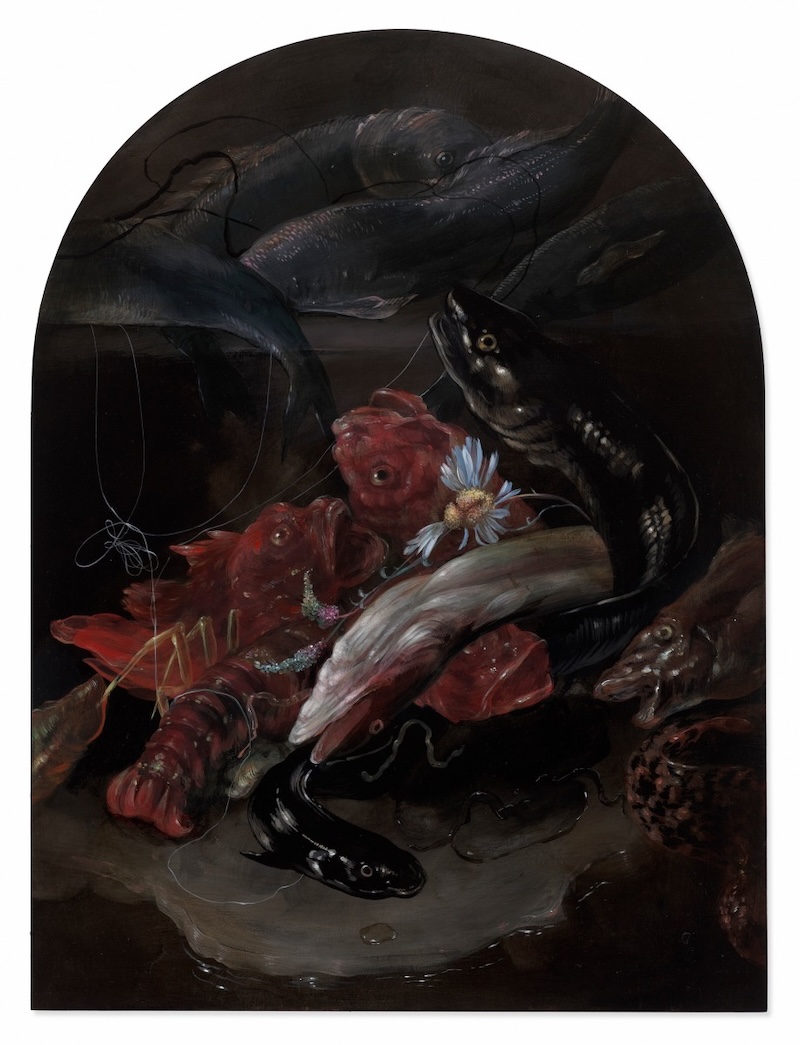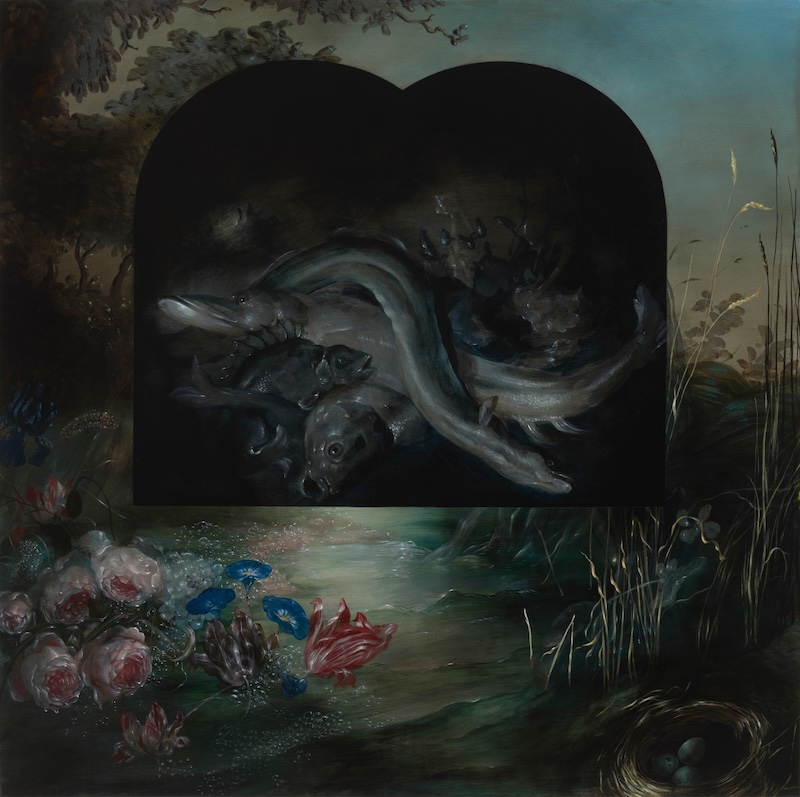In the mythology of human space, the archway stands at the threshold of change. It is at once the gate between past and future, known and unknown, and it is the open invitation to step through. Artist Nicole Duennebier has cultivated a practice replete with such invitations, where alcoves, tableaus, and surreal organic assemblages invite viewers through the looking glass into the borderlands between the alien and the familiar.
Duennebier’s paintings glimmer out of darkness like hyperreal omens from a dreamlike past. Flowers and decay spill forth in uncanny dioramas that marry the still life traditions of the Dutch Old Masters with personal narratives of dread, change, and encounters with wildlife. Carefully rendered in acrylic and glaze, each work oscillates wildly between the historical and the personal, vitality and ruin, and desire and disgust. Stylistically, Duennebier’s paintings blur the line between observation and ornamentation. In Still Life with Benthic Species and Fish, for example, shellfish sprawl in a glistening heap, at once study and highly ornate spectacle.
The dualism that animates Duennebier’s work is an invitation to step close and embrace the ambiguous. Not only do Duennebier’s tableaus serve as portals to strange and layered dreamscapes, but several scenes emerge from that transportive aside space of the alcove. This is most apparent within Tent Worm Bouquet, where silken flowers teem with caterpillars in their shadowed nook. Even more intriguingly, several of Duennebier’s tableaus themselves contain tableaus. Scenes-within-scenes lure the eye ever deeper as in the Bête Noire series, in which dark portals loom out of twilit forests. Evocative of both archways and tombstones, Duennebier’s commanding cutouts are portal and portent in one.
Above all, Duennebier’s paintings are windows to deep emotional spaces, where inevitability and lack of control are the hallmarks of life; such is the “spectacular nightmare” of Still Life with Fishbowl, with its piscine transi tomb that captures lush beauty and moribund confinement in one. Yet alongside the dread, Duennebier’s work still resonates with curiosity and all the devotion of a careful brush. Exemplified by the encroaching flood in Still Life with Waterlogged Nest, vitality may be tempered by vulnerability, but we must practice the art of looking despite it all.
Faint of Heart brings forth a body of work that is neither a lesson in mortality nor a lamentation against cruel fate. It is an invitation to look, to pay attention, to gaze unflinchingly ahead at whatever may unfold. Duennebier’s work reminds us to step past the threshold and into the unknown, for the only way out is through. —Vivian Xu
https://www.nicodimgallery.com/



